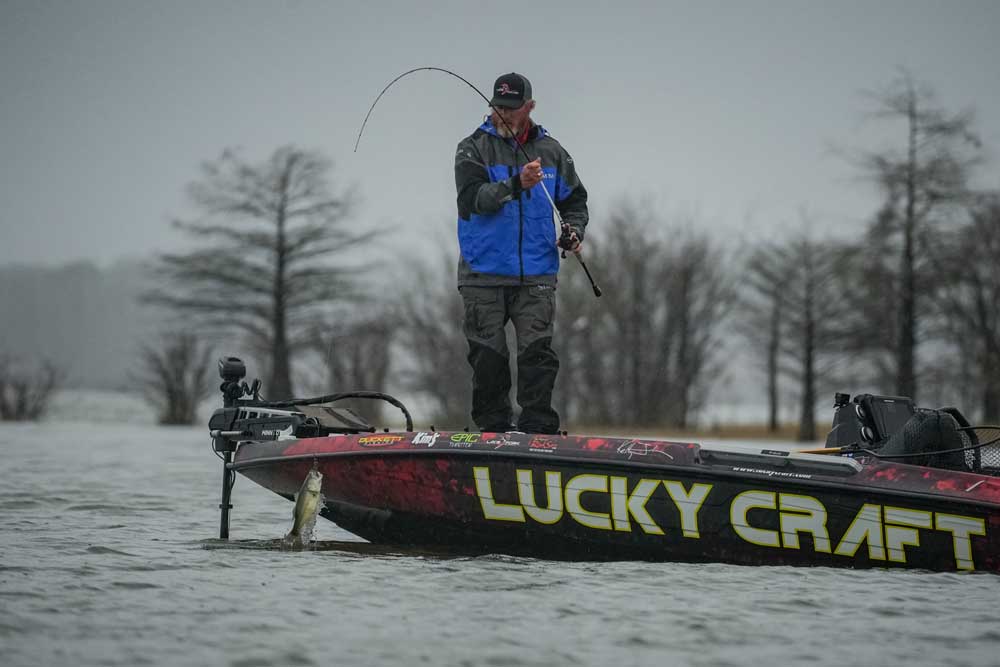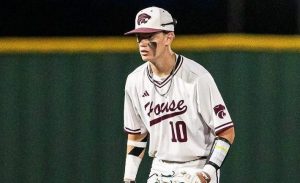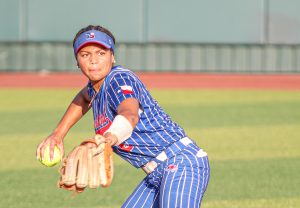Taking It Slow: Fishermen need to stand out in a crowd for spawning bass
Published 10:08 pm Friday, February 21, 2025

- Pro angler Kelly Jordon said fishing slow, different size baits and getting off the beaten path are just some of the ways to be successful when a lake is crowded with bass fishermen fishing the spawn. (MLF/Courtesy)
It is that time of the year when any day that the weather is semi-cooperative boat ramps fill up early as bass fishermen rush to the water.
In Texas, at least, it is the time of the year that fishermen have their best chance at catching their biggest fish. Female bass are laden with eggs and waiting for the water temperature to move steadily into the 60s to spawn. For the next several months it will be wave after wave of fish moving inshore, typically with the biggest fish going first to grab the best spawning sites.
Trending
Between the cold fronts that have passed through Texas this month fishermen have taken advantage of warmer days, some as high as the 80s locally, to chase pre-spawn bass and those that moved ashore early. Between now and the end of April the ramps will only get fuller.
The problem is that most fishermen are on the same plan, working the banks one after another with plastic lizards. By the end of the day what fish are up have seen the same or similar baits a hundred times.
Tyler pro Kelly Jordon said there are things fishermen can do to stand out in a crowd, and some they must do if they want to be successful this time of year.
“Bigger baits. Bigger and smaller. Something they haven’t seen a hundred times,” said Jordon, who has spent years fishing both Major League Fishing and BASS tours, after a guiding career on Lake Fork.
“Also, everyone says the biggest fish are under their boat, so back out a cast,” he added.
But maybe the most important suggestion he gives is the most critical.
Trending
“And this time of year, slow down a lot,” Jordon emphasized.
He said the cold weather, like what blew through the state the last few days, will have moved bass back offshore, but not a lot. When temperatures start climbing again the first wave of spawning fish will again move in and the bite will go from a reaction bite to what Jordon calls a spawn bite.
“When it switches to more of a spawn bite, slow down. It is less of reaction bite like it used to be with the lipless crankbait we used to cherish in February,” Jordon said.
By slowing down, successful fishermen like Jordon know the key is when you think you are fishing slow, slow down.
“One thing I have always said is that there is nothing that is universally true when it comes to fishing, but the closest anything I have seen is spring slow and fall fast,” he said.
There are other tricks of the trade Jordon adheres to, and one of those is trying to fish waters that may be too difficult for others to fish. If the crowd is in the protected pockets look for the opposite.
“If it is windy, I know it can be difficult, but if it is fishable at all, fish the stuff that is harder to fish. The more exposed an area is, the less pressure there is going to be. And when it is on a good lake and they are in there, a lot of it is confidence. Slow down and fish thoroughly,” he said.
Jordon said then it comes down to the basics for this time of year, water temperature, weather, water clarity and available cover. Find the right combination of those factors and the bass will be in an area.
“Simplified, they are going to be in the process of spawning in the next few weeks or month or two. They are going to be near spawning areas, in them or outside of them. Know where they are going,” he said.
Borrowing a phrase from Texas fisheries biologist Bob Lusk, Jordon referred to it as happy water.
“If you can find happy water, that is where the fish are going to be,” Jordon said.
Again, that comes down to paying attention to the little things like going to southern facing pockets early because with the sun to the south, that is the water that is going to catch the heat of the sun first and warm up the fastest.
Jordon also said this time of year fishermen need to be mobile, ready to move around in search of the most productive waters with the right conditions.
“It is easy when you find it, but often one area is like another except one they are catching fish in, and one they are not. That is why you have to move,” he explained.
— Contact Steve Knight at outdoor@tylerpaper.com







